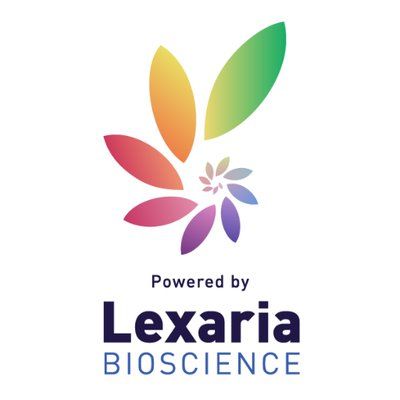预约演示
更新于:2025-05-07
Eli Lilly Australia Pty Ltd.
更新于:2025-05-07
概览
标签
其他疾病
皮肤和肌肉骨骼疾病
内分泌与代谢疾病
小分子化药
合成多肽
单克隆抗体
疾病领域得分
一眼洞穿机构专注的疾病领域
暂无数据
技术平台
公司药物应用最多的技术
暂无数据
靶点
公司最常开发的靶点
暂无数据
| 排名前五的药物类型 | 数量 |
|---|---|
| 小分子化药 | 4 |
| 合成多肽 | 3 |
| 单克隆抗体 | 3 |
| 重组多肽 | 1 |
关联
11
项与 Eli Lilly Australia Pty Ltd. 相关的药物靶点 |
作用机制 IL-13抑制剂 |
在研机构 |
原研机构 |
最高研发阶段批准上市 |
首次获批国家/地区 欧盟 [+3] |
首次获批日期2023-11-16 |
作用机制 GIPR激动剂 [+1] |
在研适应症 |
最高研发阶段批准上市 |
首次获批国家/地区 美国 |
首次获批日期2022-05-13 |
靶点 |
作用机制 RET抑制剂 |
在研机构 |
在研适应症 |
非在研适应症 |
最高研发阶段批准上市 |
首次获批国家/地区 美国 |
首次获批日期2020-05-08 |
100 项与 Eli Lilly Australia Pty Ltd. 相关的临床结果
登录后查看更多信息
0 项与 Eli Lilly Australia Pty Ltd. 相关的专利(医药)
登录后查看更多信息
62
项与 Eli Lilly Australia Pty Ltd. 相关的文献(医药)2023-07-11·BMC musculoskeletal disorders
Knee osteoarthritis patient perspectives of their care in an australian private physiotherapy setting: a qualitative exploratory interview study.
Article
作者: Sun, Hans ; Dennis, Sarah ; Schabrun, Siobhan M ; Naylor, Justine M ; Mills, Kathryn ; Gibson, Kathryn A ; Thom, Jeanette M ; Livings, Rebecca
2023-01-01·Medical Decision Making
Validating the Assumptions of Population Adjustment: Application of Multilevel Network Meta-regression to a Network of Treatments for Plaque Psoriasis
Article
作者: Welton, Nicky J. ; Brnabic, Alan ; Phillippo, David M. ; Ades, A. E. ; Schymura, Yves ; Saure, Daniel ; Dias, Sofia ; Belger, Mark
2022-12-01·Arthritis Research & Therapy2区 · 医学
‘Not at target’: prevalence and consequences of inadequate disease control in systemic lupus erythematosus—a multinational observational cohort study
2区 · 医学
ArticleOA
作者: Ohkubo, Naoaki ; Chan, Madelynn ; O'Neill, Sean ; Chen, Yi-Hsing ; Zhang, Zhuoli ; Takeuchi, Tsutomu ; Hamijoyo, Laniyati ; Tugnet, Nicola ; Katsumata, Yasuhiro ; Luo, Shue-Fen ; Gibson, Kathryn A ; Wu, Yeong-Jian J ; Nikpour, Mandana ; Ng, Kristine Pek Ling ; Tanaka, Yoshiya ; Harigai, Masayoshi ; Hoi, Alberta ; Cho, Jiacai ; Lau, Chak Sing ; Basnayake, B M D B ; Kikuchi, Jun ; Kumar, Sunil ; Navarra, Sandra V ; Sockalingam, Sargunan ; Goldblatt, Fiona ; Morand, Eric F ; Zamora, Leonid ; Lateef, Aisha ; Bae, Sang-Cheol ; Kandane-Rathnayake, Rangi ; An, Yuan ; Li, Zhanguo ; Louthrenoo, Worawit ; Hao, Yanjie ; Oon, Shereen ; Golder, Vera
100 项与 Eli Lilly Australia Pty Ltd. 相关的药物交易
登录后查看更多信息
100 项与 Eli Lilly Australia Pty Ltd. 相关的转化医学
登录后查看更多信息
组织架构
使用我们的机构树数据加速您的研究。
登录
或

管线布局
2026年01月01日管线快照
管线布局中药物为当前组织机构及其子机构作为药物机构进行统计,早期临床1期并入临床1期,临床1/2期并入临床2期,临床2/3期并入临床3期
批准上市
11
登录后查看更多信息
当前项目
| 药物(靶点) | 适应症 | 全球最高研发状态 |
|---|---|---|
加卡奈珠单抗 ( CGRP ) | 偏头痛 更多 | 批准上市 |
来金珠单抗 ( IL-13 ) | 特应性皮炎 更多 | 批准上市 |
塞普替尼 ( RET ) | RET融合阳性非小细胞肺癌 更多 | 批准上市 |
度拉糖肽 ( GLP-1R ) | 2型糖尿病 更多 | 批准上市 |
特立帕肽(云南先施) ( PTH1R ) | 原发性骨质疏松症 更多 | 批准上市 |
登录后查看更多信息
药物交易
使用我们的药物交易数据加速您的研究。
登录
或

转化医学
使用我们的转化医学数据加速您的研究。
登录
或

营收
使用 Synapse 探索超过 36 万个组织的财务状况。
登录
或

科研基金(NIH)
访问超过 200 万项资助和基金信息,以提升您的研究之旅。
登录
或

投资
深入了解从初创企业到成熟企业的最新公司投资动态。
登录
或

融资
发掘融资趋势以验证和推进您的投资机会。
登录
或

生物医药百科问答
全新生物医药AI Agent 覆盖科研全链路,让突破性发现快人一步
立即开始免费试用!
智慧芽新药情报库是智慧芽专为生命科学人士构建的基于AI的创新药情报平台,助您全方位提升您的研发与决策效率。
立即开始数据试用!
智慧芽新药库数据也通过智慧芽数据服务平台,以API或者数据包形式对外开放,助您更加充分利用智慧芽新药情报信息。
生物序列数据库
生物药研发创新
免费使用
化学结构数据库
小分子化药研发创新
免费使用




